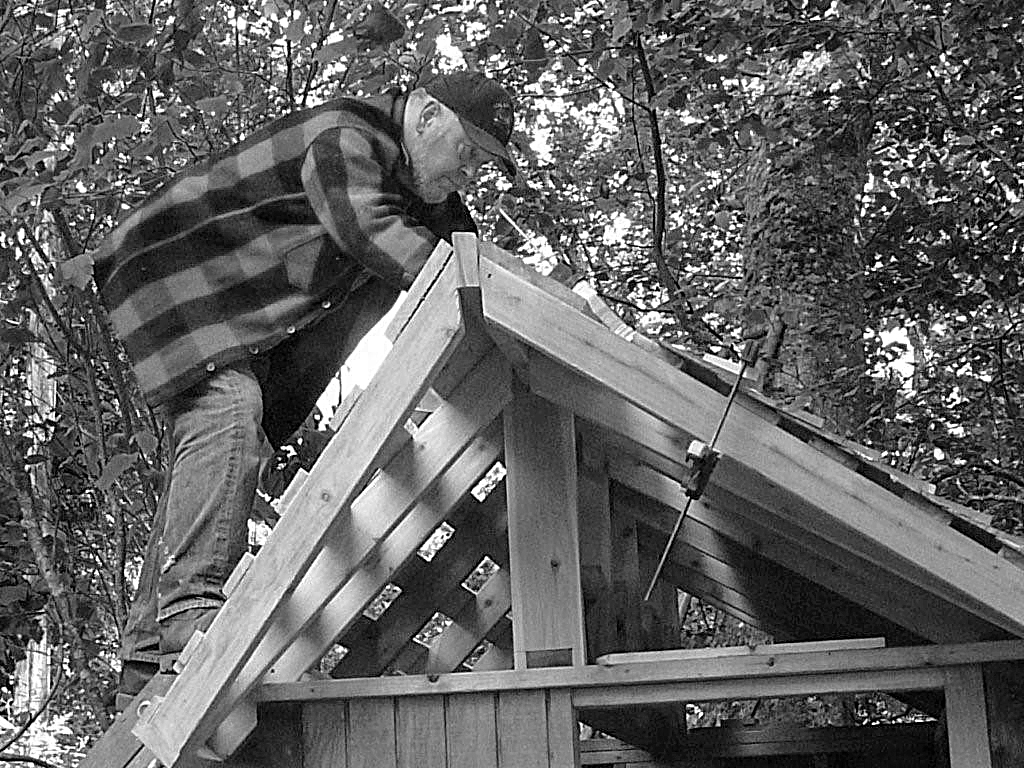By Seán C. Malone and John Sweetman
“How many of these joints have you done?”
“Well, only one today, but it’s not even lunchtime yet.”
That refers to the “Mortise and Tenon” joints we were making to assemble a “picnic cover” for our friend Bill who had a property on Indian Point. It has been pointed out that these joints were discovered to be at least 7,000 years old.
Our friend Bill was a retired applied physicist who had contributed to early laser development and appreciated complex ideas. Bill was a designer of the steering rockets on the lunar module of Apollo 10.
At first, as a neighbor and friend, we would help him out with small projects, and he would compensate us with some cash or a good salmon dinner … as long as we cooked the salmon. But Bill had bigger things in mind as he asked us to build several projects. So, as a couple of retired lads, we had to come to an amicable arrangement.
“I could give you two an hourly wage. What do you want?”
We pondered that offer and didn’t want to spoil the fun we were having. So, after some thought over grilled salmon and a bottle of Vashon wine, we agreed.
“We’d like to be paid enough to make it look respectable, but not so much that we couldn’t tell you to buzz off if we didn’t like what we were doing.”
And remember, we only charge half as much as anybody else, but as a bonus, we work twice as slow.”
One of the reasons we were “slow” is that we basically hated nails, crappy two-by-fours, and simple joints, which is where mortise and tenon joints came in, among other tedious construction joints.
Bill found this agreeable, and we proceeded to build many small projects. We built what we think is the finest outhouse on the Island. It had wi-fi, an incinerating potty, and a genuine bronze porthole. In addition, it had heat, a flat-screen TV, and a fold-down bed. A Dutch-style door with a stained-glass window completed what Bill came to call “The Throne Room.”
Bill wanted a Zen Garden up the steep hill across a small, permanent stream, so we built a stone pathway to a bench overlooking our secret crabbing spot. The Tori-style Zen gate is still at the entrance, although covered with an Akiba vine from the old Minglement building. Our big project was covering a picnic table and sink adjacent to the small spot that was suitable for any structure, but we spent days moving and leveling with shovels and a wheelbarrow just to get a start.
We used not one nail in any of this. Pegs and jointed posts and beams were what we enjoyed doing. After many expensive trips to Tacoma Screw, we used bronze marine bolts. There were some nails, now that we think about it. We nailed the cedar roof with copper fasteners and installed a copper ridge line to continuously release copper salts for moss prevention.
Most of the work was done with older hand tools such as chisels and auger bits, so a lot of “verbal banter” took place. Many times, as Bill left to get supplies, he would say,”I hope you two haven’t killed each other when I get back.”
Such was the fun of working.
Old Daisy dog loved to go under the cabin and try to dig out the supports to the cabin floor. So, one day the cabin wall shifted. I heard a loud ping as one of the three-by-three-foot windowpanes fell out. John replaced the rotted logs above and below the six-by-six, four-pane window. While repairing the window frame, he found square nails that had been out of use since the 1860s.
John’s description of our relationship with Bill is precious. I had never worked a mortise and tenon joint, so I participated as a helper. Our porthole offered a great view of outer Quartermaster Harbor. Though the bronze porthole was new, it had been destined for a Liberty ship of the early 1940s. Bill’s project continued for over three years, only proving that we worked “twice as slow for half as much.”

